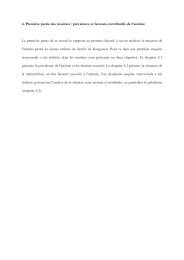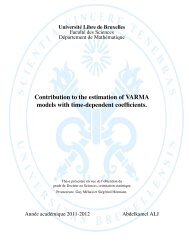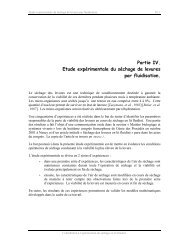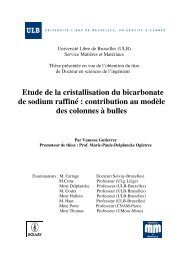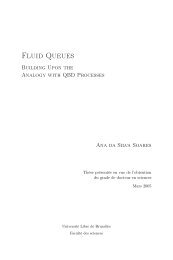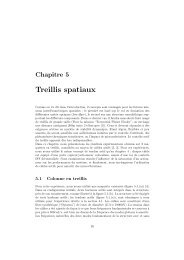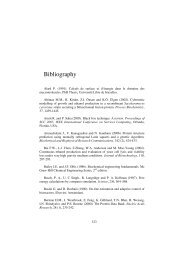Diapositive 1 - de l'Université libre de Bruxelles
Diapositive 1 - de l'Université libre de Bruxelles
Diapositive 1 - de l'Université libre de Bruxelles
Create successful ePaper yourself
Turn your PDF publications into a flip-book with our unique Google optimized e-Paper software.
Chapitre ICHAPITRE IGrowth rate and chemical features of the massive calcium carbonate skeleton ofPetrobiona massiliana (Baeriida, Calcaronea, Calcispongiae)Julie Hermans 1&2 , Philippe Dubois 2, Luc André 3 , Jean Vacelet 4 and Philippe Willenz 1 ∗Published in Journal of the Marine Biological Association of the United Kingdom, June 2010, 90:749-754doi: 10.1017/S0025315409991081ABSTRACTIn addition to the spicules typically produced by sponges, about twenty hypercalcifiedspecies belonging to both classes Demospongiae and Calcispongiae secrete a massivebasal calcareous skeleton composed of calcite or aragonite. Skeletal growth rates andgrowth mechanisms are still poorly known in those hypercalcified Calcispongiae. In situcalcein staining experimentation on the Mediterranean calcisponge Petrobiona massilianarevealed a mean annual growth rate of the massive skeleton of 236 µm/yr (±90). ScanningElectron Microscopy (SEM) revealed that some spicules are entrapped within the massiveskeleton (a solid mass forming apical crests with multidirectional growth axes) during itsformation. Whole actines were observed within the massive skeleton of fracturedspecimens, indicating that they do not dissolve after entrapping. Calcein incorporationbands seen through epifluorescence microscopy and SEM morphological observations ofthe skeletal surface revealed cone shaped protuberances corresponding to active growthareas. A spatially discontinuous growth was highlighted, but the annual growth rates weresimilar at the tip of crests and at the bottom of <strong>de</strong>pressions separating them. The skeletonof P. massiliana is composed of magnesium calcite with strontium as the main traceelement. Significant differences in skeletal chemistry of specimens collected in differentMediterranean locations revealed a possible temperature <strong>de</strong>pen<strong>de</strong>nce of Mg/Ca. Althoughsuch temperature signature exists in the massive skeleton of P. massiliana, its use as an* 1Department of Invertebrates, Royal Belgian Institute of Natural Sciences, Rue Vautier 29, B-1000, Belgium2Marine Biology Laboratory, Université <strong>libre</strong> <strong>de</strong> <strong>Bruxelles</strong>, CP 160/15, Avenue F.D. Rossevelt 50, B-1050, Belgium3 Section of Petrography-Mineralogy-Geochemisty, Royal Museum of Central Africa, Leuvensesteenweg 13, B-3080 Tervuren,Belgium4 4 Centre d’Océanologie <strong>de</strong> Marseille, Aix-Marseille Université, CNRS UMR 6540 DIMAR, Station Marine d’Endoume, rue Batterie<strong>de</strong>s Lions, 13007 Marseille, France35



